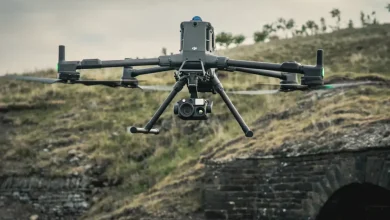Remote Employee Performance: Global Teams Management Guide 2025

The remote work revolution has fundamentally transformed how organizations manage global talent, with distributed teams now comprising over 40% of the modern workforce. Companies leveraging Employer of Record services to manage international remote employees report 22% higher productivity rates compared to traditional office-based teams. However, achieving peak performance across global remote teams requires strategic frameworks that address cultural differences, technology gaps, and performance management challenges unique to distributed work environments.
Research from leading organizations demonstrates that properly equipped remote employees deliver 35% better results than their unprepared counterparts. The difference lies not in the technology alone, but in comprehensive support systems that encompass everything from cultural intelligence training to advanced collaboration tools. Companies that invest in remote employee enablement experience significant returns, including a 45% reduction in turnover rates, a 30% improvement in employee satisfaction scores, and measurable increases in project completion rates.
Understanding Global Remote Employee Challenges
Remote employees across different time zones and cultures face unique obstacles that traditional office workers never encounter. The primary challenges include communication barriers, technology limitations, cultural misunderstandings, and the absence of informal knowledge transfer that naturally occurs in physical offices.
Communication complexity intensifies when team members operate across multiple languages and cultural contexts. What seems like straightforward feedback in one culture may be perceived as harsh criticism in another. Similarly, meeting styles, decision-making processes, and conflict resolution approaches vary dramatically across regions, creating potential friction points that can derail team performance.
Technology infrastructure disparities represent another critical challenge. While employees in major metropolitan areas may have access to high-speed internet and modern equipment, those in rural or developing regions might struggle with connectivity issues, outdated hardware, or inadequate home office setups. These disparities create performance gaps that compound over time if left unaddressed.
Isolation and engagement concerns affect remote employees differently based on their cultural backgrounds and personal circumstances. Research indicates that 43% of remote workers experience loneliness, but this percentage varies significantly across cultures, with collectivist societies showing higher rates of remote work isolation compared to individualistic cultures.
Building Comprehensive Remote Performance Frameworks
Successful remote performance management requires structured frameworks that address both individual productivity and team collaboration. The most effective approaches combine clear performance metrics with cultural sensitivity and technological support.
Performance measurement systems must shift from activity-based tracking to results-oriented evaluation. Traditional metrics, such as hours worked or meetings attended, become irrelevant in asynchronous work environments. Instead, focus on outcome-based indicators such as project completion rates, quality metrics, customer satisfaction scores, and innovation contributions.
Key performance indicators should include: • Goal achievement rates and timeline adherence • Quality scores from peer reviews and customer feedback • Innovation metrics, including new ideas contributed and implemented • Collaboration effectiveness measured through team project success • Knowledge sharing contributions to team learning • Customer or stakeholder satisfaction ratings.
Regular performance conversations replace annual reviews with ongoing feedback loops, fostering a continuous improvement culture. Weekly one-on-ones, monthly team retrospectives, and quarterly strategic alignment sessions provide continuing opportunities for improvement. These conversations must be culturally adapted – some cultures prefer direct feedback while others require more nuanced approaches.
Recognition and reward systems require cultural customization to motivate global team members effectively. Public recognition motivates employees from individualistic cultures, while private acknowledgment may be more appropriate for team-oriented cultures. Monetary rewards, professional development opportunities, and flexible work arrangements serve as practical motivational tools across different regions.
Technology Stack for Global Remote Excellence
The right technology infrastructure forms the backbone of remote employee performance. However, technology selection must consider global accessibility, cultural preferences, and varying levels of digital literacy across team members.
Core collaboration platforms should prioritize asynchronous communication capabilities while supporting real-time interaction when necessary. Tools like Slack, Microsoft Teams, or specialized platforms like Notion provide centralized communication hubs that accommodate different time zones and working patterns. The key is selecting platforms that work reliably across different internet connections and device types.
Essential technology components include: • Cloud-based project management systems with offline capabilities • Video conferencing tools with high-quality audio for non-native speakers • Document collaboration platforms supporting multiple languages • Time tracking and productivity measurement tools • Virtual private networks (VPN) for secure remote access • Digital wellness tools for work-life balance monitoring.
Equipment standardization programs ensure all team members have access to professional-grade tools regardless of their location. Successful companies provide laptop computers, high-quality headsets, ergonomic furniture allowances, and internet connectivity stipends. Some organizations establish regional equipment distribution centers to reduce shipping costs and improve support accessibility.
Digital security protocols become critical when employees work from various locations with different security standards. Implement multi-factor authentication, regular security training, encrypted communication channels, and clear guidelines for handling sensitive information in home office environments.
Cultural Intelligence Development for Remote Teams
Cultural intelligence (CQ) training transforms remote teams from groups of isolated individuals into cohesive, high-performing units. Organizations with high cultural intelligence report 35% better performance in international markets and significantly reduced conflict rates among diverse team members.
Cultural awareness programs should address communication styles, decision-making processes, time orientation, and feedback preferences across different cultures. For example, while German team members may prefer direct and detailed feedback, colleagues from high-context cultures, such as Japan, might find such directness overwhelming and prefer more subtle communication approaches.
Training components should include: • Communication style awareness and adaptation techniques • Time zone consideration and scheduling best practices • Cultural holidays and work pattern recognition • Conflict resolution strategies across different cultural contexts • Building trust and rapport in virtual environments • Inclusive meeting facilitation techniques.
Language support initiatives help non-native speakers participate fully in team activities. This includes providing access to language learning platforms, translation tools, and communication coaching. Some companies designate “language buddies” to help team members improve their communication skills in a supportive environment.
Cross-cultural mentorship programs pair employees from different cultural backgrounds to foster understanding and knowledge sharing. These relationships help break down cultural barriers while providing valuable learning opportunities for all participants.
Performance Monitoring and Optimization
Effective performance monitoring for remote global employees requires a balanced approach that respects cultural differences while maintaining accountability standards. The goal is to create transparency without micromanagement, enabling autonomous work while ensuring team alignment.
Data-driven performance insights help identify patterns and optimization opportunities across global teams. Advanced analytics can reveal productivity trends, communication effectiveness, and collaboration bottlenecks that might not be visible in traditional management approaches. However, data collection must respect privacy concerns and cultural attitudes toward monitoring.
Continuous improvement processes should incorporate feedback from team members across all regions and cultures to ensure effective implementation. Regular surveys, focus groups, and suggestion systems help identify pain points and opportunities for optimization. The key is to act on feedback quickly and communicate changes transparently to maintain trust and engagement.
Wellness and burnout prevention become crucial when managing employees across different time zones and cultural contexts. Some cultures normalize overwork, while others prioritize work-life balance. Establish clear boundaries, monitor workload distribution, and provide mental health support resources adapted to different cultural contexts and healthcare systems.
Advanced Strategies for Elite Performance
Top-performing remote global teams implement sophisticated strategies that go beyond basic remote work support. These approaches require significant investment but deliver exceptional returns in productivity, innovation, and employee satisfaction.
AI-powered performance optimization uses machine learning to identify productivity patterns and provide personalized recommendations for improvement. These systems can analyze communication patterns, work schedules, and collaboration effectiveness to suggest optimizations while respecting individual privacy and cultural preferences.
Immersive virtual collaboration, facilitated by VR and AR technologies, creates shared experiences that bridge physical distance. While still emerging, these technologies show promise for complex problem-solving sessions, training programs, and team-building activities that traditionally required in-person interaction.
Predictive analytics for team dynamics helps managers anticipate and prevent performance issues before they escalate into critical problems. By analyzing communication patterns, project timelines, and team interaction data, organizations can identify early warning signs of burnout, conflict, or disengagement.
Measuring Success and ROI
Quantifying the success of remote performance initiatives requires comprehensive metrics that capture both hard business outcomes and soft benefits, such as employee satisfaction and cultural integration.
Business impact measurements include productivity increases, cost savings from reduced office space, improved talent retention rates, and expanded access to global talent pools. Many organizations report 20-40% cost savings through remote work programs while maintaining or improving performance levels.
Employee experience metrics encompass satisfaction scores, engagement levels, career development progress, and indicators of work-life balance. These metrics help ensure that performance improvements don’t come at the expense of employee well-being or long-term sustainability.
Long-term strategic benefits include improved disaster resilience, reduced geographic constraints on talent acquisition, and enhanced ability to serve global markets through local expertise. These benefits often exceed the immediate productivity gains and provide competitive advantages that compound over time, ultimately providing a lasting competitive edge.
Equipping remote global employees for peak performance requires comprehensive strategies that address technology, culture, performance management, and individual development needs. Organizations that invest in proper remote employee enablement see significant returns through improved productivity, reduced costs, and access to global talent pools. The key lies in implementing holistic approaches that respect cultural differences while maintaining high performance standards, creating environments where distributed teams can thrive and deliver exceptional results regardless of their physical location.

Source: Remote Employee Performance: Global Teams Management Guide 2025




